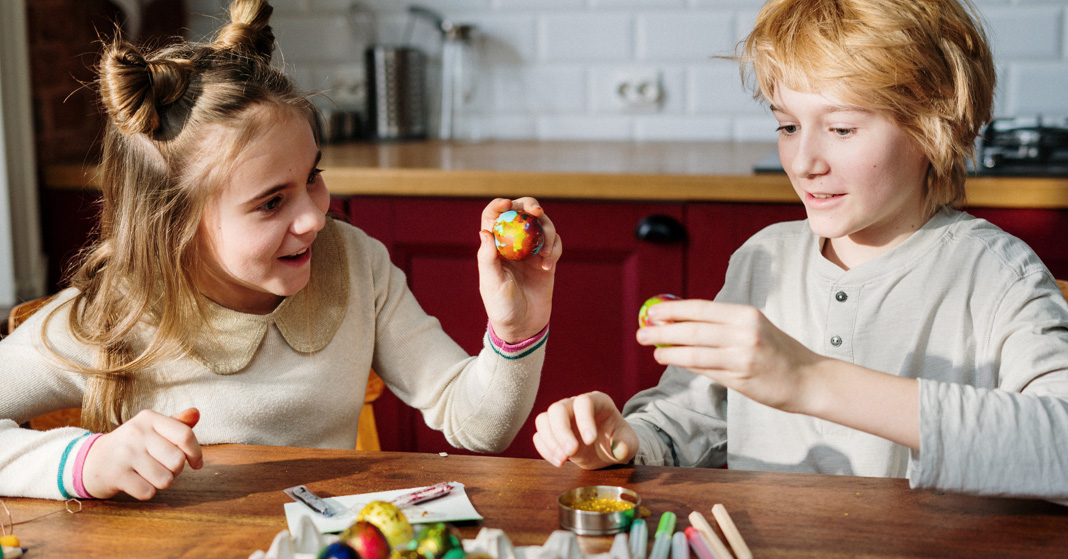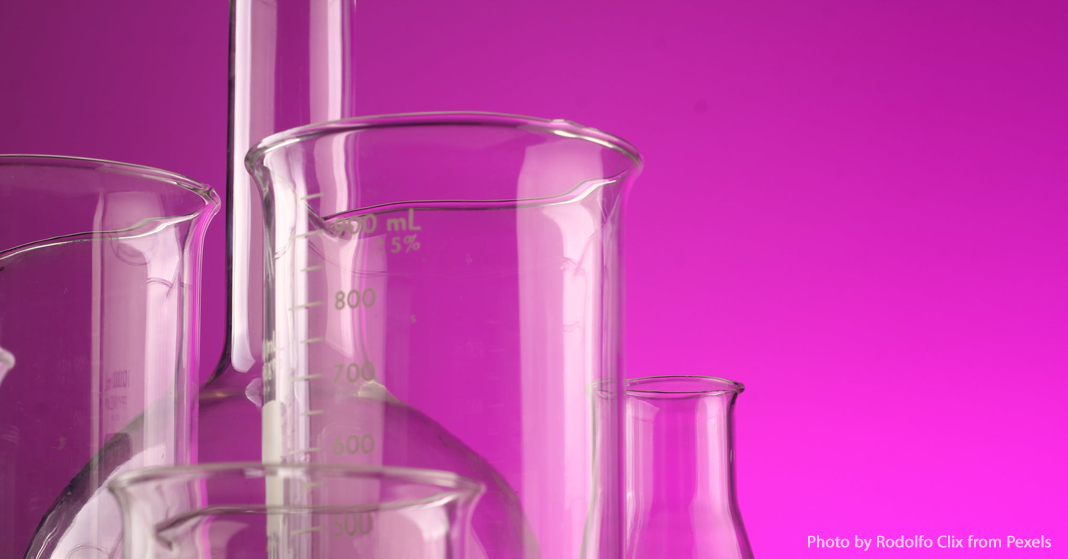
Projects, activities, and labs all play an important role in homeschooling. Sometimes we use them to help us assess whether or not our child truly understands a concept. And sometimes we use them to build a deeper understanding about a concept. But homeschool projects can be challenging, because, in order to do them, we have to have the right materials. That means that we have to plan ahead to make sure that I have everything we need. And sometimes getting those materials can be difficult and expensive. If you are like me and have multiple school-aged children, you may be tempted to skip those projects all together. [Read more…] about Resources for Homeschool Projects
Labs
Labs That Get the Right Results

What do I smell? What was that noise? Why is the water so cold? Can we build a tall, tall tower? My toddler is full of questions about her world. You probably remember those days. So many questions! When we think about all these questions, science naturally comes to mind. But science is not about knowing the right answers. It’s about finding ways to answer the right questions. Children are naturally curious. One of the reasons you might homeschool is to focus attention on what your children find interesting. What better way to get hands-on experience answering questions than with labs?
It may be tempting to let your kids read about lab experiments. You may think that watching a video will teach them the answers just as well. But there are three main benefits to doing the labs.
1. We learn better by doing.
To learn any new skill, you have to try it yourself. Lab exercises in science class are not just teaching your children answers for a test. Labs are about building new skills. When I was a biology student, I didn’t particularly enjoy dissections. Why do I need to cut open a preserved animal to learn where all its parts are? I remember sitting in Human Anatomy and Physiology lab in college. We were dissecting cats. On this day we were trying to find blood vessels. I was stuck on one site where a branching vessel should be. It just wasn’t there. I finally sought help. My professor cut a little further down and found the branch. He was so excited that he called over every student in the lab to see it. I was learning how to think about three dimensional objects, or spatial reasoning. But I was also learning that not every specimen follows the rules. Imagine how useful that experience would be to a future surgeon. Spatial reasoning is also critical for engineers, athletes, artists, and more.
2. With labs, we learn to ask the right questions.
During my dissection, I was asking “Why isn’t the branch point where it’s supposed to be?” If I had asked, “Where is it?” I would likely have kept looking until I found it. When doing a lab exercise, your child may get stuck. Encourage her to ask a different question. Over time, and with experience, she will get better at asking the right questions. Questions are the inspiration of science. You can’t have a hypothesis without first having a question. If it’s a good one, it will motivate the pursuit of answers. When you use a lab manual, encourage your child to ask at least one question beyond the manual. Then see if you can find an answer together. A child pursuing his own question will retain more knowledge.
3. We learn to think critically about results of our labs.
The goal of a lab exercise should not merely be getting to the answer. If that were the goal, watching a video would be just as useful. It’s about the process leading up to the result. I recently saw an article on social media about a handwashing experiment. The headline said it was “just in time for flu season.” But the cover photo of several slices of moldy bread made me cringe. We can all agree that handwashing is important. The experiment seemed to support that idea. So why did I cringe? The headline implied that the experiment showed how to prevent the spread of the flu. But the flu is caused by a virus. In fact, most of what makes us sick is viral or bacterial. But a virus and bacteria won’t grow on bread. The experiment actually had nothing to do with the flu or any illness.
What does the experiment tell us? It tells us that there are organisms, including bacteria and mold spores, on our hands and other surfaces. And washing our hands is the best way to get rid of these. Though the headline and cover photo were misleading, mold was still an effective, even stunning and disgusting, way to get that point across. A lab exercise like this one gives students the opportunity to recognize limitations. With the right guided discussion about what an experiment actually reveals, those limitations can be a hidden strength. They teach valuable thinking skills that just watching a video may not be able to teach.
Getting started at home
Laboratory experiences don’t have to be expensive. Many chemicals needed for experiments are already in your home. For example, you probably already have containers of baking soda, vinegar, table salt, and hydrogen peroxide. It’s possible to extract DNA from a strawberry using dish soap, a coffee filter, and rubbing alcohol. An experiment like this is ripe for questions and critical thinking. Can I extract DNA from a different fruit? What about table salt? My cheek cells? Why do I get different amounts of DNA out of different fruits or the cheek cells? What if my DNA extraction from cheek cells is no more productive than the table salt? What might have gone wrong? Can I try a different technique to improve my results?
You may be surprised how long your children will keep going if they are asking the right questions. Personally, I love it when my toddler is just having fun, but I know she’s learning. If you pay attention to what your child is naturally curious about, you can reap the most benefits.
• • • • •
Valerie is a wife and a mother to a very busy toddler. In her free time she enjoys reading all kinds of books. She earned a BS in Biology from Bob Jones University, minoring in Mathematics, and a PhD in Molecular Genetics from Ohio State University. Valerie has 15 years of experience working in research laboratories and has coauthored 8 original research articles. She has also taught several classes and laboratories at the high school and college levels. She currently works as a data analyst and a freelance writer.
4 Reasons to Include Labs in Your Homeschool

Let’s get real for a moment. Teaching high school science is intimidating. I still remember how nervous my homeschool mom was about high school science. When I got to physics, we couldn’t find any labs kits. It was a nightmare. My dad helped me do one physics lab without a kit. That single lab cost us around $75 in supplies. We also spent hours creating the tool we needed for the lab. And when we finished, it didn’t even work. We couldn’t collect reliable data, and I never finished that particular lab.
So what could my mom do? She knew she needed to keep homeschooling through high school—and that she needed to include labs. Before I tell you how she made high school labs work for our family, here are four reasons she was committed to teaching with labs.
1. Creational Approach
Science at its core examines the works of God. We’re looking at what He did at creation and how His creation functions. As much as nature documentaries and science textbooks can evoke awe and wonder at God’s creation, they’re only presenting what others have discovered by investigating God’s world. If we teach our kids science without incorporating close, hands-on examination of creation, we’re doing it wrong.
2. Deep Understanding
There were a number of chemistry concepts that I thought I understood. After all, I could ace the reading quiz. Then we did the lab over the concept. I discovered I didn’t understand it nearly as well as my quiz grade suggested. Labs are where head knowledge meets real-world experience and critical thinking. If I hadn’t completed the labs, I would have only superficial knowledge of chemistry without deep understanding.
3. Student Scientists
We aren’t teaching our children science so they can win on a TV game show or in a trivia competition. That would reduce science to superficial answers for esoteric questions such as, “Why is the sky blue?” That isn’t what science is at all. Instead, it’s a powerful tool for investigating and solving real-world problems. So when we teach our children science, we want them to act like junior scientists instead of students learning about science facts. Labs are where children act like scientists. This is especially true in high school science. We need labs to give our students the opportunity to behave like scientists.
4. Required Courses
Many states require lab sciences for high school graduation. And even if your state doesn’t, the college your son or daughter wants to attend may require it. And colleges may view non-lab science courses with suspicion. So how many labs should you include? A good rule of thumb is thirty hours of labs for each course. If you figure your setup time, lab time, and post lab time, each lab can last two to three hours. So aim for ten to fifteen labs.
Making Labs Happen at Home
So what did my mom do? She found kits. A number of kits helped us complete high school biology and chemistry. These kits made high school labs achievable. My sister and I could do most of these labs without any parental aid. They also made it affordable. We could have spent thousands of dollars if we had tried to pull together all the individual components that were in these kits. Instead, they cost my parents around $200.
For me, these lab kits made science creational, deepened my understanding, and gave me an opportunity to practice being a scientist.
At BJU Press, we’ve worked with Logos Science, Inc., to create lab kits for all of our secondary science textbooks and video courses. If you’re looking for something to help you bring labs to your homeschool, check out our Logos Science Kits.